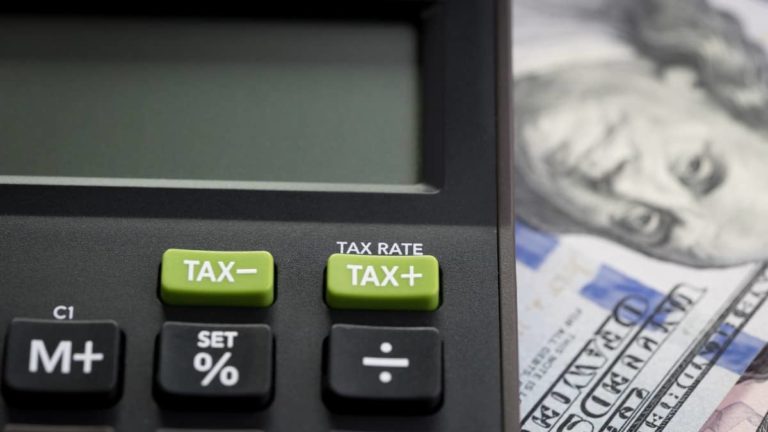It’s great when your business is consistently profitable. But, sometimes, unexpected situations come up. Depending on the circumstances, your business could experience an unforeseen loss. You need to know how a loss in business can affect your company in the long-term.
What is a business loss?
A business loss occurs when your business has more expenses than earnings during an accounting period. The loss means that you spent more than the amount of revenue you made. But, a business loss isn’t all bad—you can use the net operating loss to claim tax refunds for past or future tax years.
Unusual items in your books
In accounting, extraordinary gains and losses are types of unusual items. Generally, unusual items are one-time, irregular occurrences. You can find unusual items on the income statement.
Report extraordinary gains and losses separately from regular income and business expenses. Separating unusual items gives a more accurate picture of financial health. You can better see recurring income generated through operations. The separation helps you track profitability during a specific accounting period.
An extraordinary loss is a decrease in assets that is not related to sales. A small business loss could result from a natural disaster, fire, expropriation, loss on the sale of equipment, or new regulation.
An extraordinary gain is an increase in assets that is not related to sales. Examples of gains include an increase of insurance coverage or paying off debt early.
Whether you experience a gain or loss, keep in mind that unusual items are unrelated to operations. But, they impact the bottom line of your business.
Understanding financial loss
As a small business owner, it’s important to understand financial loss. Operating a business does not automatically guarantee you will make a profit. It’s possible to experience a financial loss, especially for new business owners. You could even end up running a business at a loss for multiple years. You need to know what to do when your business experiences a loss.
How to claim a business loss tax deduction
If you have an extraordinary loss, claiming business losses might be possible. You could get a refund for all or part of your tax liabilities from previous years. You usually receive the refund quickly, within 90 days. After making the appropriate accounting entry for income tax refund funds, the fast inflow of cash can help you get back on your feet financially.
If you’re a sole proprietor, you can deduct any loss your business incurs. The amount is deducted from nonbusiness income. Nonbusiness income can come from a job, investment, or spouse’s income.
If you own an LLC, S corporation, or partnership, your share of the business’s losses affects your individual tax return. You can deduct a business loss from personal income the same way a sole proprietor does.
C corporation owners cannot deduct business losses on their personal tax returns. Business funds, liabilities, and tax benefits are separate from C Corp owners, so deducting business losses on a personal return isn’t possible.
If the deductions you’re allowed to take are more than your taxable income, you have a net operating loss (NOL).
What is NOL?
A net operating loss (NOL) occurs when a business’s allowable tax deductions are more than the taxable income. In one accounting period, you incur more expenses than earnings. Usually, you can use the net operating loss to cover past tax liabilities. The idea is to give some form of tax relief to companies that suffer a financial loss.
To find the net operating loss, first figure out your annual losses from business. If you’re a sole proprietor, business losses are listed on Schedule C.
Add your financial losses to all other tax deductions. Then, subtract that figure from your total income for the year. This number is your adjusted gross income (AGI).
Your AGI needs to be negative for a loss to occur. Add any nonbusiness deductions that are more than nonbusiness income to the AGI. Include standard or itemized deductions, deductions for personal exemptions, nonbusiness capital losses, IRA contributions, and charitable contributions.
If the number is still negative, you have a net operating loss and can claim a net operating loss deduction Use Schedule A of Form 1045 to calculate net operating loss.
Carryback and carry forward business losses
You can carry losses back to past tax returns or forward to future tax returns. Depending on your business’s financial situation, you will want to either carry back or carry forward business losses.
NOL carryback
A carryback period is usually two years. If the NOL occurred because of theft or a casualty, you might be able to carry the amount back three years.
Usually, you carry back the NOL to the return you filed two years ago first. If there is NOL left over, apply it to the next tax return. And, if there’s NOL left after carrying back to all recent returns, you can carry the amount forward to future tax returns.
Carry forward for business losses
You could also carry forward business losses to future tax returns. You are able to carry forward losses for up to 20 years. If you didn’t pay any taxes in the past two years, you should carry an NOL forward.
Or, you might want to carry forward losses if you expect your income to greatly increase in upcoming years. The increase would put you in a higher tax bracket and the carry forward of business losses would reduce your tax liabilities.
Getting some benefit from your business loss depends on the legal type of business you own and whether your investment in the business is ‘at risk’ in whole or in part. It also depends on whether you have other income.”
—Jean Murray, Business Coach
Talking with lenders and investors
If you want outside capital, you need to understand your extraordinary gains and losses. Investors and lenders look at your income statement to determine your level of risk. Different factors determine risk, including profitability and total debts.
Extraordinary gains and losses do not affect profitability and are unrelated to your operations. Gains and losses are left out of the equation when looking at how well your business generates a profit. To show lenders an accurate picture of your business’s profitability, you should separate operating and extraordinary items on the income statement.
Financial losses can reveal information about your business’s liabilities. A large financial loss can result in a lot of debt. The amount of debt your business holds affects an investor or lender’s decisions.
Need a simple way to record your business transactions? Patriot’s online accounting software is easy-to-use and made for small business owners and their accountants. We offer free, USA-based support. Try it for free today.
This article is updated from its original publication date of June 29, 2017.
This is not intended as legal advice; for more information, please click here.





